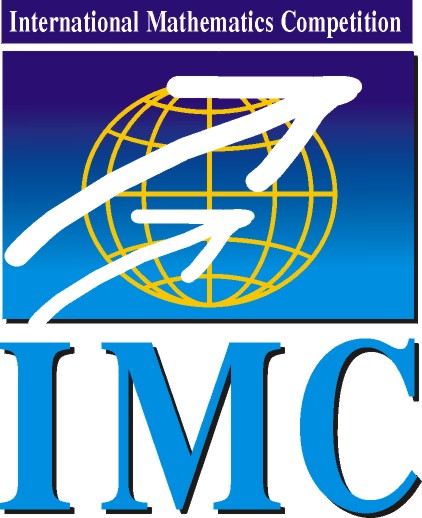
|
International Mathematics Competition
|
IMC 2024 |
| Information | Schedule | Problems & Solutions | Results | Contact |
IMC2023: Day 2, Problem 9
Problem 9. We say that a real number \(\displaystyle V\) is good if there exist two closed convex subsets \(\displaystyle X\), \(\displaystyle Y\) of the unit cube in \(\displaystyle \mathbb{R}^3\), with volume \(\displaystyle V\) each, such that for each of the three coordinate planes (that is, the planes spanned by any two of the three coordinate axes), the projections of \(\displaystyle X\) and \(\displaystyle Y\) onto that plane are disjoint.
Find \(\displaystyle \sup\{V\mid V \text{ is good}\}\).
Josef Tkadlec and Arseniy Akopyan
Solution. We prove that \(\displaystyle \sup\{V\mid V \text{ is good}\} = 1/4\).
We will use the unit cube \(\displaystyle U=[-1/2,1/2]^3\).
For \(\displaystyle \varepsilon\to 0\), the axis-parallel boxes \(\displaystyle X=[-1/2,-\varepsilon]\times [-1/2,-\varepsilon]\times [-1/2,1/2]\) and \(\displaystyle Y=[\varepsilon,1/2]\times[\varepsilon,1/2]\times[-1/2,1/2]\) show that \(\displaystyle \sup\{V\}\ge 1/4\).
To prove the other bound, consider two admissible convex bodies \(\displaystyle X\), \(\displaystyle Y\). For any point \(\displaystyle P=[x,y,z]\in U\) with \(\displaystyle xyz\ne 0\), let \(\displaystyle \overline{P}=\{[\pm x,\pm y, \pm z]\}\) be the set consisting of 8 points (the original \(\displaystyle P\) and its 7 ``symmetric'' points). If for each such \(\displaystyle P\) we have \(\displaystyle |\overline{P} \cap (X\cup Y)|\le 4\), then the conclusion follows by integrating. Suppose otherwise and let \(\displaystyle P\) be a point with \(\displaystyle |\overline{P} \cap (X\cup Y)|\ge 5\). Below we will complete the proof by arguing that:
- [(1)] we can replace one of the two bodies (the ``thick'' one) with the reflection of the other body about the origin, and
- [(2)] for such symmetric pairs of bodies we in fact have \(\displaystyle |\overline{P} \cap (X\cup Y)|\le 4\), for all \(\displaystyle P\).
To prove Claim (1), we say that a convex body is thick if each of its three projections contains the origin. We claim that one of the two bodies \(\displaystyle X\), \(\displaystyle Y\) is thick. This is a short casework on the 8 points of \(\displaystyle \overline{P}\). Since \(\displaystyle |\overline{P} \cap (X\cup Y)|\ge 5\), by pigeonhole principle, we find a pair of points in \(\displaystyle \overline{P} \cap (X\cup Y)\) symmetric about the origin. If both points belong to one body (say to \(\displaystyle X\)), then by convexity of \(\displaystyle X\) the origin belongs to \(\displaystyle X\), thus \(\displaystyle X\) is thick. Otherwise, label \(\displaystyle \overline{P}\) as \(\displaystyle ABCDA'B'C'D'\). Wlog \(\displaystyle A\in X\), \(\displaystyle C'\in Y\) is the pair of points in \(\displaystyle \overline{P}\) symmetric about the origin. Wlog at least 3 points of \(\displaystyle \overline{P}\) belong to \(\displaystyle X\). Since \(\displaystyle X\), \(\displaystyle Y\) have disjoint projections, we have \(\displaystyle C,B',D'\not\in X\), so wlog \(\displaystyle B,D\in X\). Then \(\displaystyle Y\) can contain no other point of \(\displaystyle \overline{P}\) (apart from \(\displaystyle C'\)), so \(\displaystyle X\) must contain at least 4 points of \(\displaystyle \overline{P}\) and thus \(\displaystyle A'\in X\). But then each projection of \(\displaystyle X\) contains the origin, so \(\displaystyle X\) is indeed thick.
Note that if \(\displaystyle X\) is thick then none of the three projections of \(\displaystyle Y\) contains the origin. Consider the reflection \(\displaystyle Y'=-Y\) of \(\displaystyle Y\) about the origin. Then \(\displaystyle (Y,Y')\) is an admissible pair with the same volume as \(\displaystyle (X,Y)\): the two bodies \(\displaystyle Y\) and \(\displaystyle Y'\) clearly have equal volumes \(\displaystyle V\) and they have disjoint projections (by convexity, since the projections of \(\displaystyle Y\) miss the origin). This proves Claim (1).
Claim (2) follows from a similar small casework on the 8-tuple \(\displaystyle \overline{P}\): For contradiction, suppose \(\displaystyle |\overline{P}\cap Y'|=|\overline{P}\cap Y|\ge 3\). Wlog \(\displaystyle A\in Y'\). Then \(\displaystyle C'\in Y\), so \(\displaystyle C,B',D'\not\in Y'\), so wlog \(\displaystyle B,D\in Y'\). Then \(\displaystyle B',D'\in Y\), a contradiction with \(\displaystyle (Y,Y')\) being admissible.
There are more examples with \(\displaystyle V\to1/4\), e.g. \(\displaystyle X\) a union of two triangular pyramids with base \(\displaystyle ACD'\) – one with apex \(\displaystyle D\), one with apex at the origin (and \(\displaystyle Y\) symmetric with \(\displaystyle X\) about the origin).
The word ``convex'' matters. E.g., in a \(\displaystyle 3\times 3\times 3\) cube, one can set \(\displaystyle X\) to be a \(\displaystyle 2\times 2\times 2\) sub-cube, and \(\displaystyle Y\) to be the (non-convex) 3D L-shape consisting of 7 unit cubes. This shows that without convexity we have \(\displaystyle V\ge 7/27>1/4\).
© IMC